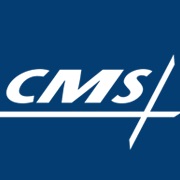How the SMART Act Resolved Medicare Secondary Payer Issues
The SMART Act was passed in order to remedy the problems seen for several decades within the Medicare Secondary Payer law.

- The Centers for Medicare & Medicaid Services (CMS) has released its final rule detailing a timeline for the expansion of the Medicare Secondary Payer Web portal, which must meet the requirements of the Medicare IVIG Access and Strengthening Medicare and Repaying Taxpayers Act of 2012 or SMART Act.

The SMART Act was passed in order to remedy the problems seen for several decades within the Medicare Secondary Payer law, according to the Medicare Advocacy Recovery Coalition. In 1980, the Senate and House of Representatives passed the Medicare Secondary Payer law, which determines the payment procedures for treating Medicare beneficiaries in the midst of a scenario in which a third party is responsible for covering medical costs.
“When the Medicare program was enacted in 1965, Medicare was the primary payer for all medically necessary covered and otherwise reimbursable items and services, with the exception of those items and services covered and payable by workers’ compensation. In 1980, the Congress enacted the Medicare Secondary Payer (MSP) provisions of the Social Security Act (the Act), which added section 1862(b) to the Act and established Medicare as the secondary payer to certain primary plans,” the Department of Health & Human Services (HHS) reported in a news brief.
Essentially, the Medicare program becomes a secondary source of insurance while the third party would be the primary source of reimbursement. This third party may be a private form of health insurance, auto insurance, worker’s compensation, or an entity required to cover medical costs due to a settlement.
However, CMS spent little time over the coming years actively enforcing the Medicare Secondary Payer law. It was only in 2007 when Congress changed the wording of the legislation to require companies paying settlements to report to CMS every award or payment made to a Medicare beneficiary.
Despite the new requirement, the system for reporting these claims and settlements was not functioning properly leading to many delays and wasted resources. Additionally, there were few accommodations to parties that were attempting to report properly but finding complications standing in the way.
To solve these challenges, the SMART Act was passed in 2012. This newer legislation provides safe harbors to stakeholders attempting to report settlements and provides a faster process for negotiating payment between multiple parties.
The SMART Act also requires CMS to release a settlement threshold in which the third parties would be exempt from the Medicare Secondary Payer law in order to prevent CMS from spending more funds on collecting and processing the claim than it would obtain in recovering the payment.
In September 2013, CMS announced an additional interim final rule with a comment period meant to create a timeline that would expand the functionalities of the Medicare Secondary Payer portal, according to the Center for Medicare Advocacy.
The claims data processed through the Web portal must be detailed and cover healthcare provider contact information, the total medical billing amount, diagnosis codes, and the dates medical treatment was provided.
The final rule recently released by CMS called Obtaining Final Medicare Secondary Payer Conditional Payment Amounts via Web Portal is meant to illustrate a timeline for allowing other authorized users besides Medicare beneficiaries to view claims denials and payment data using the Medicare Secondary Payer Web portal. The timeline is also meant for developing more functionalities that users can access through the portal.
“In the September 2013 IFC (78 FR 57801), we noted that we will continue to provide beneficiaries with access to details on claims related to their pending settlements through the Web portal,” the final ruling on the Federal Register states. “This will include dates of service, provider names, diagnosis codes, and conditional payment amounts. Beneficiaries and their attorneys or other representatives will continue to be able to dispute the relatedness of claims and submit a notice of settlement and other types of documentation through the Web portal.”
“We have added functionality that will permit beneficiaries to download or otherwise electronically obtain time and date stamped payment summary statements, and exchange other information securely with Medicare's contractor via the Web portal.”
“A beneficiary's attorney or other representative and the applicable plan will continue to be able to register to use the Web portal and access conditional payment amounts. To access more detailed information related to a beneficiary's pending settlement, users will register to use a multifactor authentication process.”
According to the CMS website, the Medicare Secondary Payer portal is meant to help in ensuring payment from workers’ compensation, no-fault auto insurance, or liability insurance. Medicare beneficiaries are able to use the portal to edit any key information related to their case.
As technology continues to advance, it is probable that CMS may need to make additional changes to its portal in order to keep up with more complex claim settlements. Due to ongoing changes, private health insurance companies or other third party insurers should be informed on these regulations in order to comply with Medicare requirements in scenarios where they are responsible for the medical treatment of Medicare beneficiaries.
Dig Deeper:
Is the Medicare Part B Proposed Rule ‘Bad Medicine’?
SNF Medicare Reimbursement Expected to Rise by $800 Million
